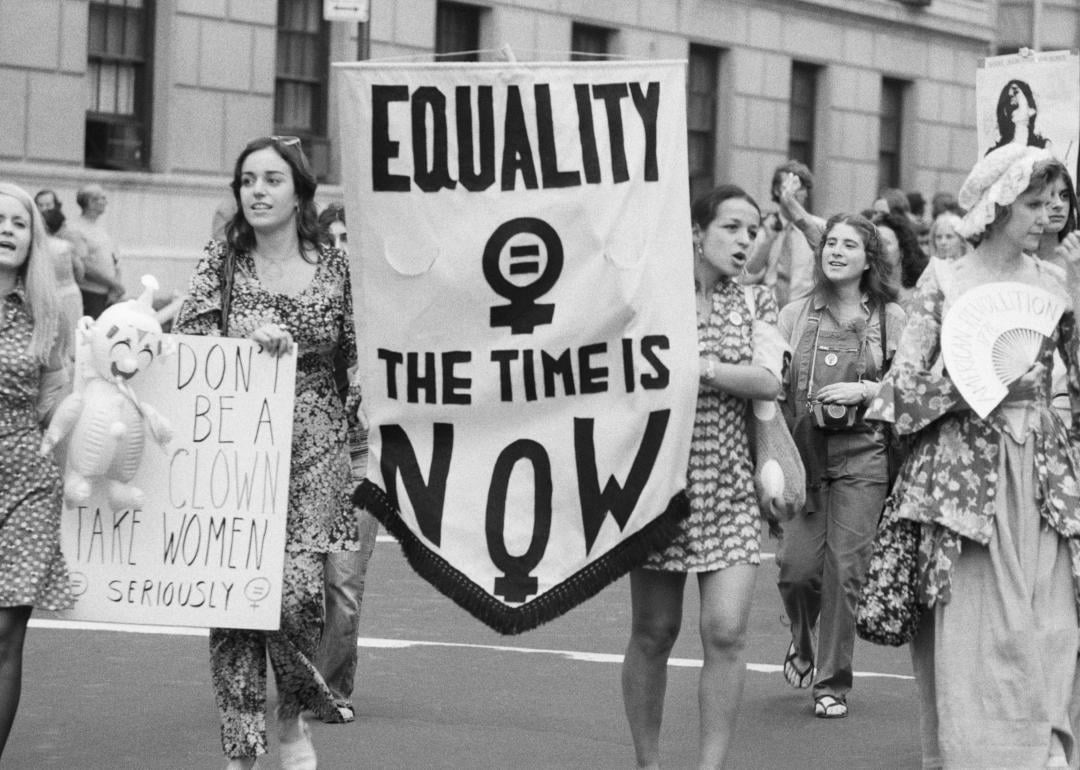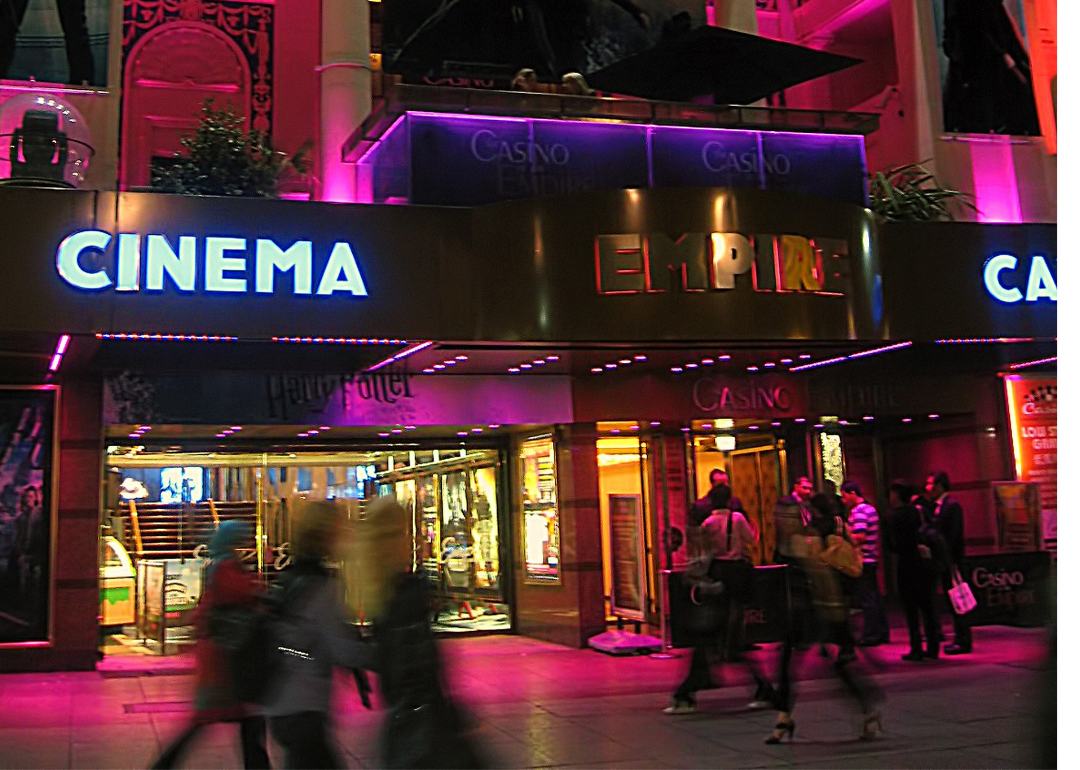
The new corporate rat race: Who can look the busiest
The new corporate rat race: Who can look the busiest
Employees are working hard to be seen, even when that visibility doesn’t translate into real progress. A new survey from remote staffing provider Connext Global Solutions finds that many professionals are caught in a cycle of productivity theater, where activity and availability often overshadow measurable results.
The 2025 Connext Global Confidence Gap Survey exposes how deeply this culture runs and what leaders can do to restore focus on outcomes that matter.
The Illusion of Productivity
Two-thirds of U.S. workers admit to engaging in performative work behaviors, such as staying late to be noticed, taking on extra tasks for visibility, or attending meetings with little value. Only 23% report being evaluated by clear, outcome-based metrics. These findings highlight a growing disconnect between what organizations say they value and what they actually reward.
Employees have learned that being seen often counts more than being effective. Many feel pressure to appear active, whether that means logging long hours, responding instantly to messages, or keeping cameras on during meetings. These signals of effort may create an impression of engagement, but they rarely translate into measurable progress.
Employees want to be recognized for creating value, not for how long they’re on the clock or how many meetings they sit through. Relying on outdated benchmarks obscures what success really looks like. By adopting clearer and fairer measures, companies can improve performance and trust.
Return-to-Office Mandates and the Visibility Trap
The survey found that only 27% of employees feel most productive in the office, while 37% believe their managers think the office is where they perform best. Despite this gap, return-to-office (RTO) mandates continue to rise. Nearly 7 in 10 respondents say these mandates are driven by leadership’s need for visibility rather than collaboration or results.
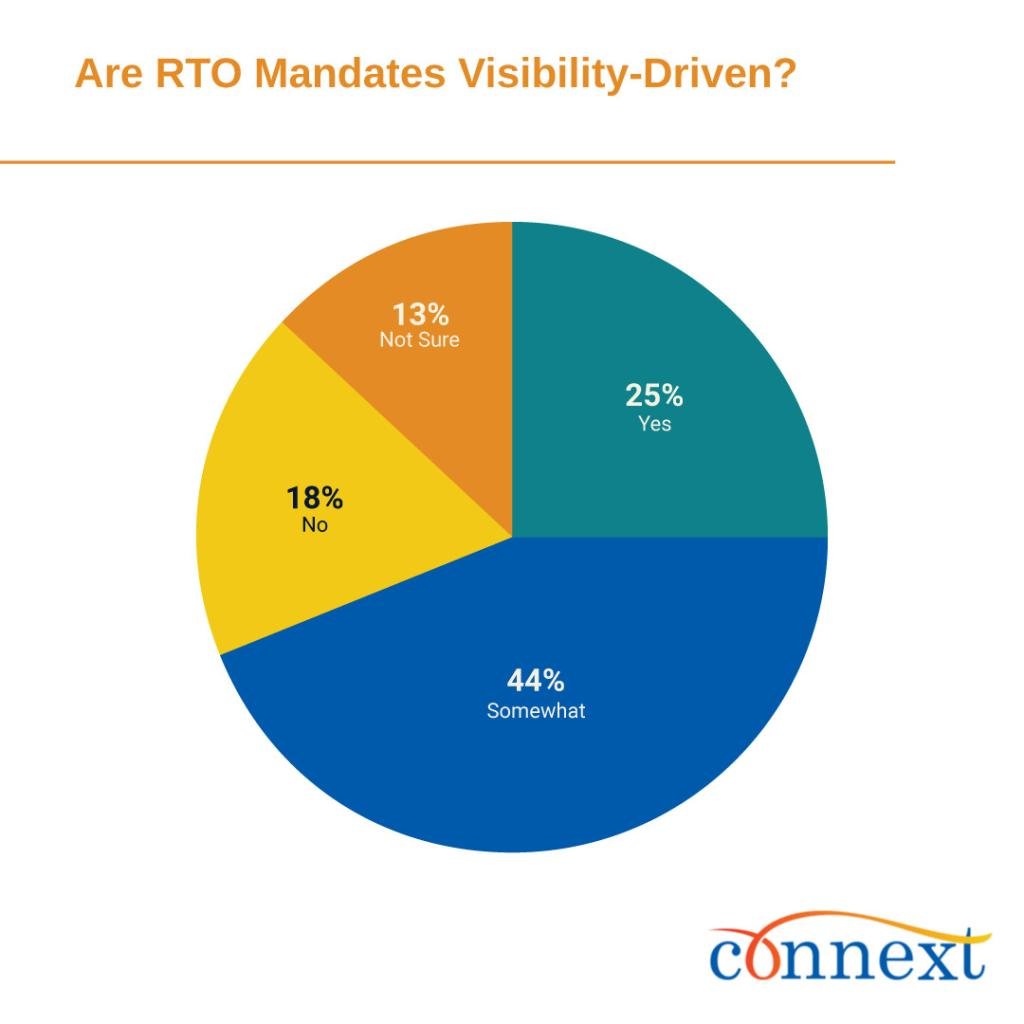
This disconnect has consequences. Forty-two percent of workers say morale declines under RTO policies, while only 20% report improvement, representing a net drop of 22 points. When executives equate presence with productivity, they risk damaging the trust and autonomy that drive real engagement.
The data suggests that leadership often relies on what can be seen as a proxy for contribution. That means filled desks, packed calendars, and online availability. Yet these signals offer little insight into the actual value created. Companies that rely on such measures may be reinforcing the very inefficiencies they hope to solve.
Moving Targets Undermine Motivation
Clarity, not control, is what motivates high-performing teams. More than half of survey participants say their performance goals shift at least occasionally, and 42% say unclear or moving targets reduce their motivation. When the definition of success keeps changing, even skilled employees struggle to stay focused and confident.
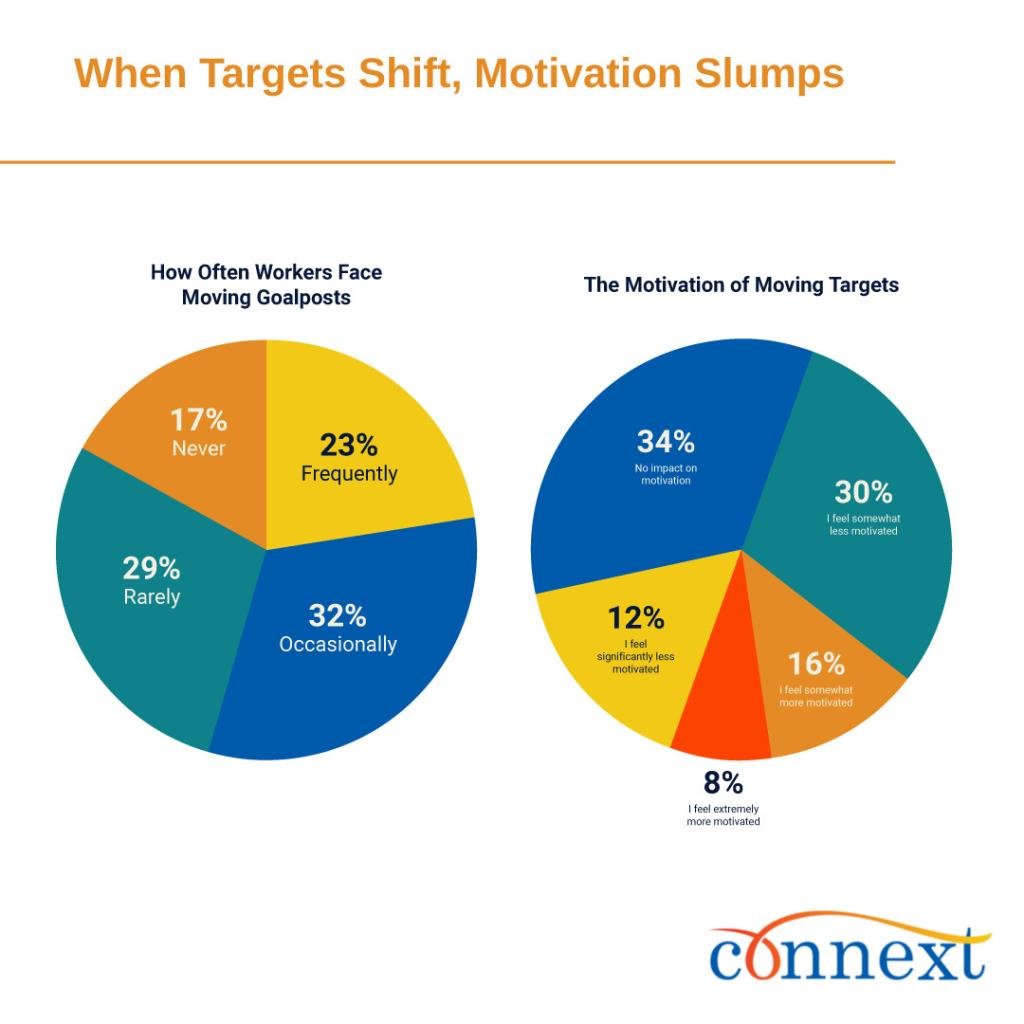
These fluctuations can erode trust in the system itself. Workers report feeling as if they are playing a game where the rules change mid-match. The result is disengagement caused by employees no longer believing the rules are consistent or fair. Stability in measurement must become a prerequisite for meaningful performance.
The Missing Ingredient: Outcome Clarity
Fewer than 1 in 4 employees (23%) say their performance is measured by metrics tied to business outcomes. A similar number (22%) believe their KPIs fully capture what “good work” looks like. The majority operate within a patchwork of subjective evaluations, mixed signals, and shifting expectations.
Without a transparent system for measuring impact, many professionals fall back on visible habits such as speed, availability, and responsiveness. Outcome clarity has become the missing operating system of the modern workplace. Without it, even the most talented teams cannot thrive.
Speed Over Substance
Nearly half of employees say they receive the most recognition for being fast or responsive. Only 40% say outcomes earn praise, and just 30% point to new ideas as a source of recognition. These incentives drive short-term responsiveness rather than long-term growth.
The pattern reinforces productivity theater. Employees adapt to what gets rewarded. When visibility and reaction time dominate performance reviews, creativity and innovation become secondary. Organizations lose sight of what truly moves the needle, such as sustained impact, strategic thinking, and collaborative achievement.
Employees Want Systems That Reflect Reality
Despite these challenges, workers aren’t rejecting accountability. They are asking for it to make sense. More than three-quarters of survey participants say they want real-time feedback and performance systems tied directly to results. The top requests include clearer outcome-based goals (59%), transparent promotion criteria (46%), and tools that make feedback more immediate (41%).
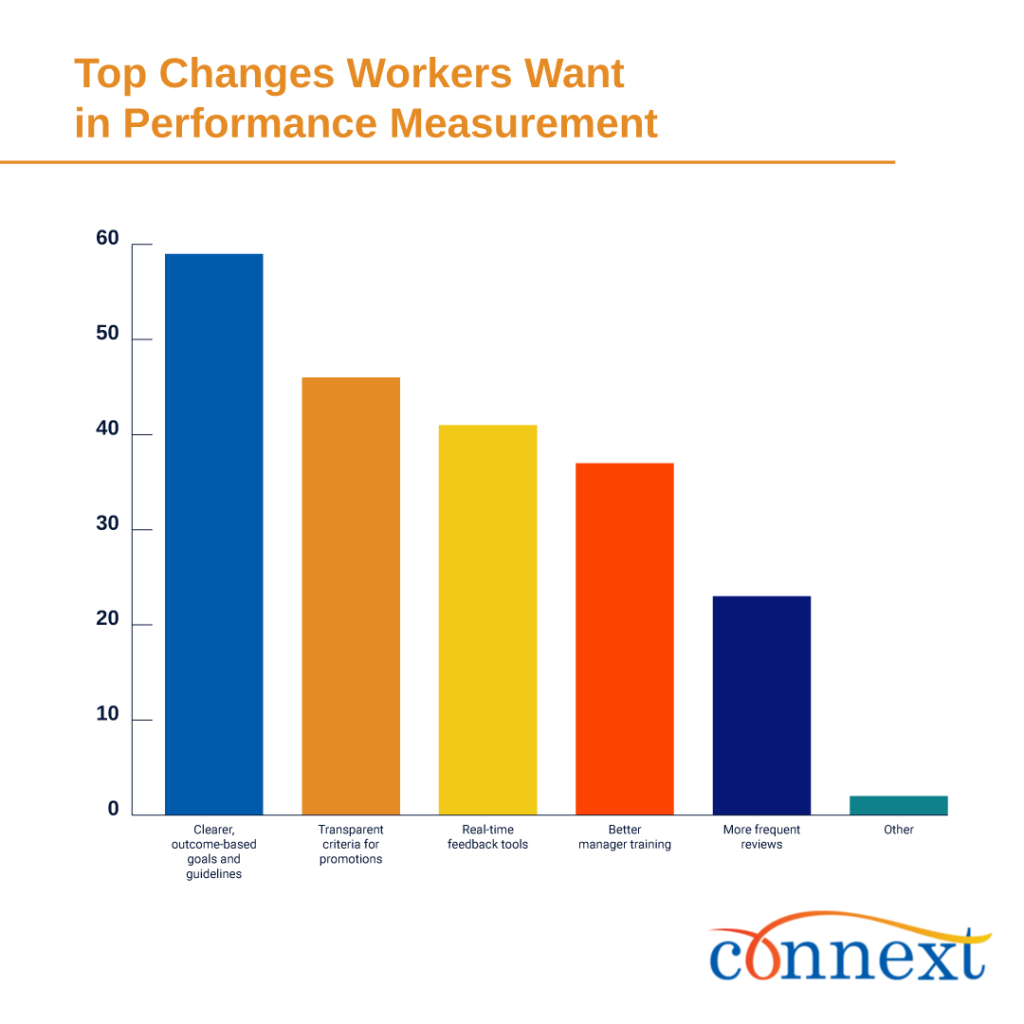
These responses suggest a workforce ready for reform. Instead of more frequent reviews, employees want better ones. They are calling for systems that link recognition to measurable contributions instead of ritualized effort. This desire for fairness and clarity points toward a broader redefinition of workplace success that is grounded in outcomes, not optics.
The Cost of Staying the Same
Organizations that fail to evolve their performance metrics risk more than inefficiency. When people sense that visibility matters more than value, engagement drops, creativity stalls, and top performers look elsewhere for fulfillment. Productivity theater may keep everyone appearing busy, but it leaves real business goals unmet.
The survey’s findings paint a picture of a workforce ready to trade performance rituals for measurable progress. The transition won’t happen automatically. It requires leadership willing to challenge old assumptions. Leaders must shift from tracking activity to evaluating outcomes, and from emphasizing immediacy to emphasizing impact.
Building the Framework for Real Impact
To create a culture that rewards real results, organizations should consider three steps:
- Define clear, outcome-based metrics. Establish performance indicators that align with tangible business goals. Clarity builds confidence and reduces time spent on performative tasks.
- Make feedback continuous. Real-time or near-real-time feedback creates opportunities for course correction and celebrates meaningful progress.
- Model impact from the top. Leaders who reward substance over visibility set the tone for a more authentic and productive culture. When recognition aligns with value creation, teams respond with trust and energy.
These steps require courage and consistency, but the return is measurable. Teams become more engaged, innovation increases, and organizations gain a clearer picture of how work drives value. The result is a workplace that doesn’t just look productive, but truly is productive.
A Call to Redefine Success
The Connext Global KPI Confidence Gap Survey captures the discrepancy between effort and impact. Employees want to contribute meaningfully and be recognized accordingly. Companies that provide this clarity will build trust, retain talent, and outperform those that continue to reward appearances.
True productivity isn’t a performance. It’s measurable progress that benefits both people and business. This research outlines a clear path for companies to measure what matters, modernize performance systems, and recognize employees not for how busy they look, but for the impact they create.
This story was produced by Connext Global and reviewed and distributed by Stacker.
